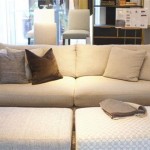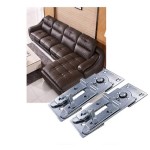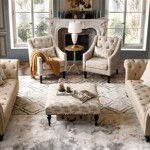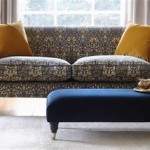How To Build A Chesterfield Sofa
Building a Chesterfield sofa is a challenging but rewarding project for experienced craftspeople. This iconic piece, recognizable for its deep button tufting, rolled arms, and low-slung profile, requires precision, patience, and a dedicated workspace. This guide details the process, offering a comprehensive overview of the necessary steps and materials.
Materials Required: The first step involves procuring the necessary materials. High-quality hardwood, such as kiln-dried beech or ash, forms the foundation of a durable frame. Plywood is also required for certain structural elements. Traditional Chesterfield sofas utilize high-density foam and Dacron wrap for cushioning. Top-grain leather is the preferred upholstery material, though faux leather or fabric can be substituted. Other necessities include upholstery tacks, buttons (covered in matching upholstery material), strong thread, wood glue, screws, and staples.
Frame Construction: The frame is the backbone of the sofa. Begin by cutting the hardwood into the required dimensions for the front and back rails, side rails, and legs. These dimensions should be based on pre-planned measurements and design considerations. Join the rails using mortise and tenon joints, reinforced with wood glue and screws, to ensure structural integrity. Attach the legs securely to the frame using appropriate joinery techniques, ensuring stability and even weight distribution.
Spring System Installation: Traditional Chesterfield sofas employ a serpentine spring system for support and comfort. Attach the springs to the frame using spring clips and twine, ensuring even spacing and tension. Cover the springs with a layer of burlap or other durable fabric to protect the cushioning from wear and tear. This layer also provides a smoother surface for the subsequent foam layers.
Cushioning and Padding: Cut high-density foam to fit the seat, back, and arms of the sofa. Glue the foam securely to the burlap-covered spring system. Wrap the foam with Dacron wrap to add softness and create a smooth, rounded profile. This step significantly influences the final comfort and appearance of the sofa.
Upholstery: The upholstery process is arguably the most complex and demanding aspect of building a Chesterfield. Begin by carefully measuring and cutting the leather or fabric, allowing extra material for folding and tucking. Start by attaching the upholstery to the frame using upholstery tacks, working from the center outwards to ensure even tension. The signature deep button tufting requires careful planning and execution. Mark the locations of the buttons on the leather and use a long needle and strong thread to create the deep tufts, securing the buttons firmly on the underside of the frame.
Button Tufting: Creating the diamond-patterned tufting characteristic of a Chesterfield requires precise measurements and consistent depth. Use a specialized buttoning tool to create the dimples for the buttons, ensuring uniform spacing. Securely attach the covered buttons using strong thread, pulling them tightly to create the deep, characteristic tufts. The button tufting on the arms and back requires careful manipulation of the leather or fabric to achieve the desired rolled effect.
Finishing Touches: Once the upholstery is complete, attach the dust cover to the underside of the frame using staples. This protects the underside of the sofa and provides a neat, finished appearance. Inspect the finished piece for any imperfections and make any necessary adjustments.
Considerations for Armrests: Chesterfield sofas are renowned for their distinctive scrolled or rolled arms. Achieving this requires careful shaping and securing of the upholstery. Use additional padding and strategically placed tacks to create the desired curve and volume. Maintain symmetry between the two arms for a balanced aesthetic.
Backrest Construction: The backrest of a Chesterfield typically features the same diamond-patterned tufting as the seat and arms. Ensure consistent spacing and depth of the tufts across the entire backrest. The backrest should be securely attached to the frame, providing firm support while maintaining the desired angle and curve.
Tools required: Building a Chesterfield sofa necessitates a range of specialized tools, including a pneumatic staple gun, webbing stretcher, buttoning tool, upholstery hammer, sharp scissors, and various measuring and marking implements. Access to a sewing machine is also beneficial for creating custom-covered buttons and addressing any necessary fabric adjustments.
Safety Precautions: Working with sharp tools and heavy materials requires adherence to strict safety protocols. Wear appropriate safety glasses, gloves, and a dust mask throughout the construction process. Ensure adequate ventilation in the workspace, particularly when working with adhesives and upholstery materials.
Skill Level and Time Commitment: Building a Chesterfield sofa is a demanding undertaking requiring advanced woodworking and upholstery skills. The project can take several weeks to complete, depending on the builder’s skill level and available time. Careful planning and meticulous execution are essential for achieving professional-quality results.

How To Make A Chesterfield Sofa Part 1 Frame

Crafting A Chesterfield Sofa Frame Plans Built In

Diy Chesterfield Sofa

Pin On Diy

The Anatomy Of Our British Made Chesterfield Sofas Timeless Chesterfields Blog

How To Make Chesterfield Sofa P1 High Quality Low Diy

Fiz Uma Nova Estrutura Do Chesterfield Diy Sofa Living Room Bed Design Dimensions

How To Make A Chesterfield Sofa Set 321 Full Making Process

Diy Modern Chesterfield Leather Sofa

Making A Chesterfield Sofa British Sofas








